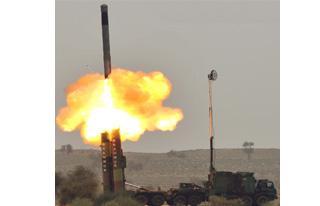
An artist's concept showing the Dawn spacecraft orbiting Vesta.
WASHINGTON (BNS): NASA spacecraft Dawn, which is on a mission to explore one of the giant asteroids in the Solar System, has found fascinating details about the celestial object's surface and geology.
New images and data acquired by scientists from the spacecraft show some areas on the surface of asteroid Vesta can be nearly twice as bright as others, revealing clues about its history.
Vesta is the second most massive asteroid in the Solar System and is believed to have survived the early phase of planet formation approximately 4.5 billion years ago. The asteroid lies in the main asteroid belt between Mars and Jupiter and is visible to naked eye from Earth.
The bright areas spotted by Dawn appear everywhere on Vesta but are most predominant in and around craters. The areas vary from several hundred feet to around 10 miles across.
According to the researchers, rocks crashing into the surface of Vesta seem to have exposed and spread this bright material. The impact process may have mixed the bright material with darker surface material.
"Our analysis finds this bright material originates from Vesta and has undergone little change since the formation of Vesta over 4 billion years ago," said Jian-Yang Li, a Dawn participating scientist at the University of Maryland, College Park. "We're eager to learn more about what minerals make up this material and how the present Vesta surface came to be."
The dark materials on the asteroid appear dark gray, brown and red, and sometimes appear as small, well-defined deposits around impact craters. They also appear as larger regional deposits, like those surrounding the impact craters scientists have nicknamed the "snowman."
"One of the surprises was the dark material is not randomly distributed," according to David Williams, another scientist working on the new findings. "This suggests underlying geology determines where it occurs."
The dark materials seem to be related to impacts and their aftermath. Scientists theorise that carbon-rich asteroids could have hit Vesta at speeds low enough to produce some of the smaller deposits without blasting away the surface.
Higher-speed asteroids also could have hit the asteroid's surface and melted the volcanic basaltic crust, darkening existing surface material. That melted conglomeration appears in the walls and floors of impact craters, on hills and ridges, and underneath brighter, more recent material called ejecta, which is material thrown out from a space rock impact.
Vesta's dark materials suggest the giant asteroid may preserve ancient materials from the asteroid belt and beyond, possibly from the birth of the Solar System, believe the scientists.
The Dawn spacecraft, launched in 2007, will continue to explore Vesta for few more months and will then embark on its second mission to explore dwarf planet Ceres where it is set to arrive in 2015.
 Previous Article
Previous Article Next Article
Next Article













The Indian Air Force, in its flight trials evaluation report submitted before the Defence Ministry l..
view articleAn insight into the Medium Multi-Role Combat Aircraft competition...
view articleSky enthusiasts can now spot the International Space Station (ISS) commanded by Indian-American astr..
view article